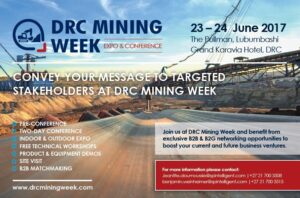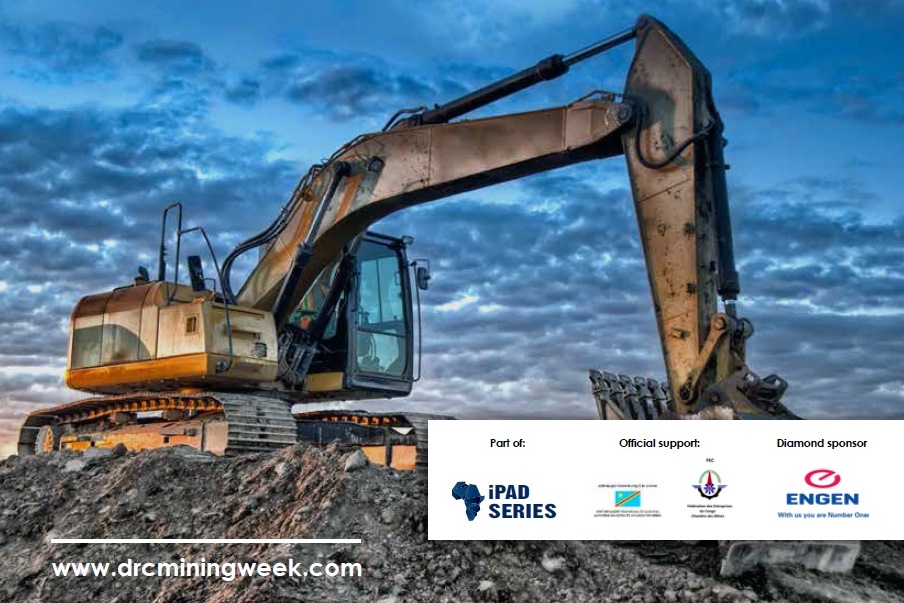
“The AMDC is achieving success in demonstrating how the African Mining Vision’s new paradigm for linkages-based mineral sectors management, represents a win-win for governments as well as the industry.”
Let’s start with some background on the AMDC and your role there?
In 2013, AMDC was set up to coordinate the implementation of the African Mining Vision (AMV), as adopted at the highest levels of African leadership, by African Union Heads of State and Government. The Center is currently housed within the United Nations Economic Commission for Africa and operates under the leadership of the African Union Commission. We provide advisory, technical, analytical and strategic assistance to help AU member states and RECs put the AMV into effect, along the minerals value chain. Considering the international scope of Africa’s mineral sector, AMDC’s work spans the national, regional/continental and global levels. I’m honored to be serving as the head of AMDC.
What are the accomplishments of the AMDC to date that you are most proud of?
Overall, we’re really proud that in less than five years, which is a very short time for initiatives of this kind, AMDC has emerged as a leading and distinctly legitimate Center of Excellence on mineral sector management, for AU Member States and Regional Economic Communities (RECs). We’ve worked with a number of countries to help develop strategic plans for their mineral sectors; reviewed mining policy and regulatory frameworks; developed Geology and Mining Information System strategies; mapped entry points for enhancing linkages and diversification; streamlined and strengthened public-private collaboration, helped build human and institutional capacities, produced important research and analytical work, among others.
These reflect AMDC’s position at the forefront of defining new ideas for mineral sector management on the continent. In this regard, AMDC is achieving success in demonstrating how the AMV’s new paradigm for linkages-based mineral sectors management, represents a win-win for governments as well as the industry. A cross-section of public, private and civil society sector actors are actively collaborating in the AMDC’s work. Such collaboration is remarkable in itself, given the sensitivities that typically underpin the sector. It also highlights another key element of our work, in that AMDC has facilitated collaborative engagement and participation for an inclusive range of public, private and civil society stakeholders, with a concrete, actionable focus on women and youth as well.
Any specific projects that you are particularly excited about?
Certainly. Our work covers a range of Advisory, Technical, Analytical and Strategic initiatives at the National, Regional/Continental and Global levels. We’re excited about our targeted and comprehensive engagements at country-level, to help domesticate the AMV in member states, building on their priorities and interests. Regionally and Continentally, we’re particularly excited about the African Minerals Governance Framework (AMGF) initiative; Geology and Mining Information Systems as well as Blue Economy initiatives; our work around Illicit Financial Flows; Capacity-building for contracts negotiations; planned work to help enhance Green Growth initiatives, etc. Globally, we’re particularly excited about opportunities that presented by the AMV Compact with the Private Sector.
What in your view are the main challenges to the African mining sector?
AMDC recognizes a number of challenges that have been well documented in several fora, including AMV reference documents. So, I wouldn’t belabor those here. However, in addition to those, perhaps I could just highlight one insight that AMDC’s research indicates, that is, it is not necessarily due to weak institutions and ineffective regulations that countries continue to be unable to take advantage of booms. It is rather the lack of long-term vision and effective policies, which create weak institutions and laws, unfit for transforming the mining sector in Africa.
What is your vision for the sector?
It is of course grounded in the AMV. In this regard, three main elements would typically characterize that vision. These include the linkages factor; a regional dimension; and a strategic planning element. The linkages factor is perhaps best exemplified by the understanding that a typical mining company spends over 61 per cent of its total investment on infrastructure and procurement – more than three times what is paid in taxes. Investment through fiscal, backward, forward and knowledge linkages thus presents opportunities for governments to align their development policies in ways that capture greater value from mining. The regional dimension would typically seek to factor in how regional value chains can help optimize the potential of minerals to catalyze development across the continent. Moreover, the strategic planning element is perhaps best reflected in the insight mentioned earlier, re. the importance of long-term vision and effective policies.
Which African countries are doing the right things in your opinion?
Valuable lessons can be learned from what is happening in almost every country, across different stages of the mineral development trajectory including new entrants, emerging and major mining countries and at different segments of the mining value chain. Perhaps I could cite one example that cuts across multiple geographic regions of Africa, where we have been most active so far. Ghana, Guinea, Kenya, Lesotho, Malawi and Sierra Leone have made commendable progress towards reforming their mineral regimes along the AMV principles, in a manner that seeks to facilitate optimal outcomes for the countries as well as for investors.
You are a featured speaker at DRC Mining in June, what will be your message at the event?
Enhancing linkages and diversification will be the key message. For over half a century, the dominant paradigm for mineral sector management was rents-based. Among other factors, the downturn clearly demonstrated why we need to rethink this paradigm. So, the AMDC Approach, which is rooted in the African Mining Vision, represents a paradigm shift. We have absolutely no doubt that building on other complementary initiatives and working together with the private sector, civil society and public sector, the AMV truly represents a win-win for all.

What are you most looking forward to at the event?
The dynamic exchange of ideas, interactive engagements and constructive discussions, that is usually only possible when all actors and interested parties are gathered in one place. In addition, of course, we’re looking forward to DRC-focused engagements, in particular.
Anything you would like to add?
Thank you indeed for this platform. We hope it is the start of continued engagement and we encourage your readers to keep engaging with AMDC. We’re always happy to hear from all interested and affected parties about how best we can work towards achieving the objectives of the AMV, in a manner that works for the countries as well as the private sector.
About Dr. Kojo Busia
Dr. Busia is the Acting Coordinator of the African Minerals Development Centre. He also leads the governance and participation team under the African Mining Vision, an African Union mining flagship for sustainable development. He led the AMDC in the design and development of the Country Mining Vision Guidebook which is now being rolled out in a number of African countries for the domestication of the African Mining Vision. He spent nearly a decade leading the United Nation Economic Commission on Africa’s support to the African Peer Review Mechanism for the African Union/NEPAD, helping the flagship program to gain traction and institutional support throughout Africa and globally.
In this role, he facilitated the adoption of the Peer Review Mechanism as the major framework for addressing natural resource governance challenges in Africa. His career spans a range of additional assignments at the international, multi-lateral and ODA level throughout Africa and globally including design and implementation of a Regional Democracy and Conflict Prevention Program in West Africa. He is a frequent lecturer on business, economics, governance and development at major events in Africa and globally.
More interviews and information at www.drcminingweek.com





